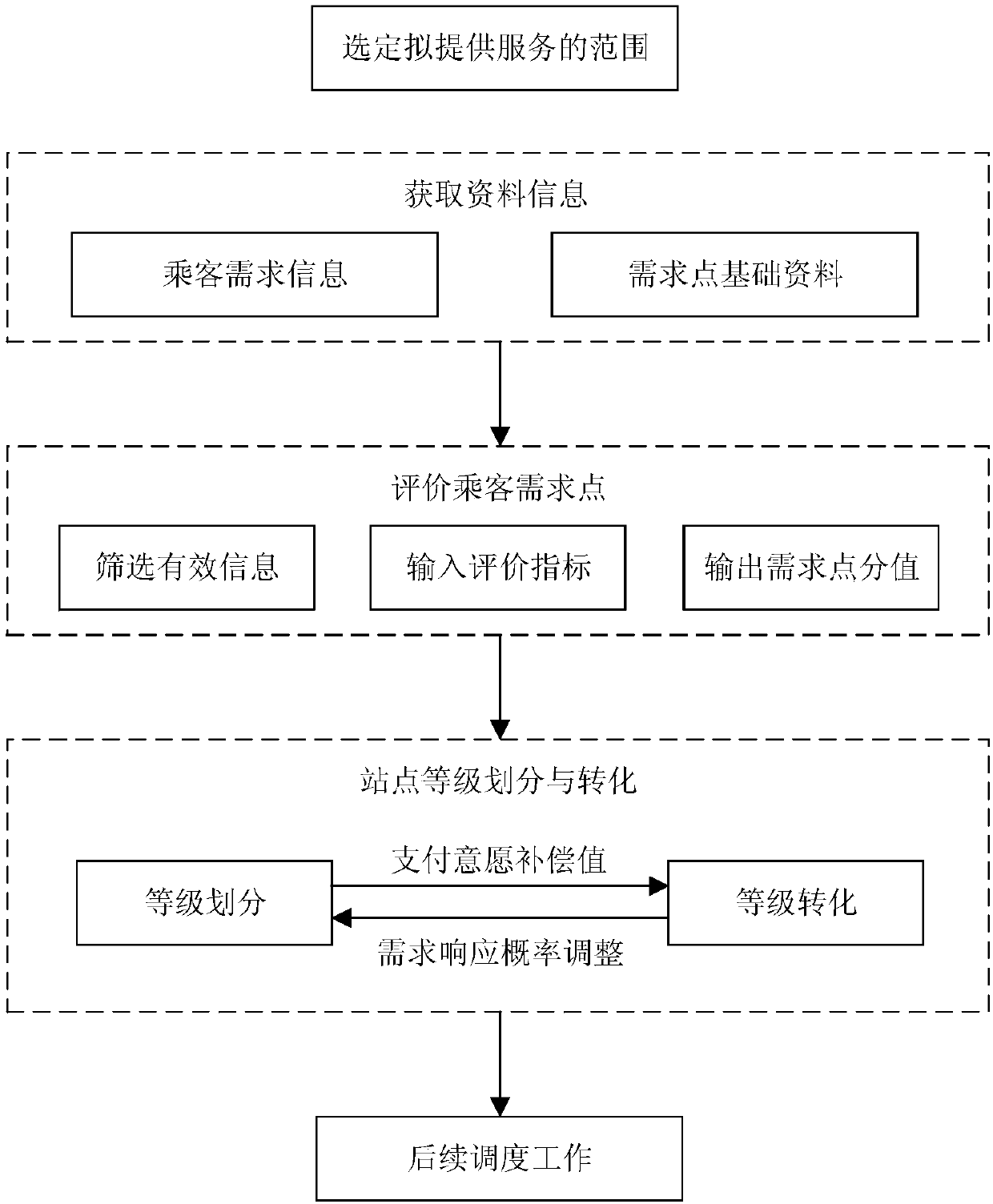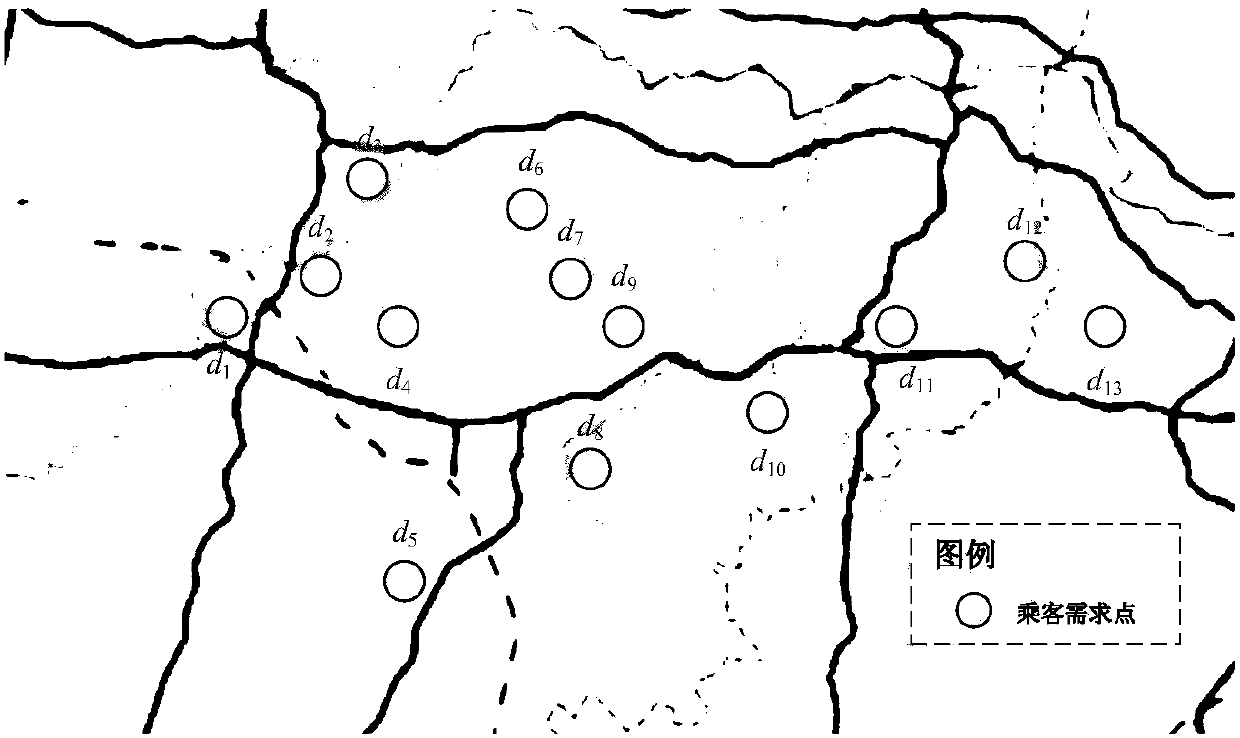Payment intention-based flexible bus stop grading and transforming method
A technology of willingness to pay and grades, applied in the field of artificial intelligence, can solve problems that affect passengers' ride experience, cannot fully express passengers' willingness to pay, and is difficult to fill in service gaps, etc., to achieve strong promotional value and strong adaptability
- Summary
- Abstract
- Description
- Claims
- Application Information
AI Technical Summary
Problems solved by technology
Method used
Image
Examples
Embodiment
[0032] This embodiment provides a method for classifying and transforming flexible bus stops based on willingness to pay. The flow chart of the method is as follows figure 1 shown, including the following steps:
[0033] 1) Select the scope of flexible bus service mode to be provided, obtain passenger demand information, and collect basic data of passenger demand points; the passenger demand information mainly includes travel starting point, travel destination, willingness to pay, travel time, selection preference, etc. The basic information of the passenger demand point includes various land use conditions near the demand point, public transportation (subway, conventional bus, etc.) station setting and line distribution, surrounding road network grade, service level and related information. The scope selection and data acquisition are as follows:
[0034] In a certain service area, the location of the flexible bus demand point is as follows: figure 2 Table 1 shows the dist...
PUM
 Login to View More
Login to View More Abstract
Description
Claims
Application Information
 Login to View More
Login to View More - R&D
- Intellectual Property
- Life Sciences
- Materials
- Tech Scout
- Unparalleled Data Quality
- Higher Quality Content
- 60% Fewer Hallucinations
Browse by: Latest US Patents, China's latest patents, Technical Efficacy Thesaurus, Application Domain, Technology Topic, Popular Technical Reports.
© 2025 PatSnap. All rights reserved.Legal|Privacy policy|Modern Slavery Act Transparency Statement|Sitemap|About US| Contact US: help@patsnap.com



